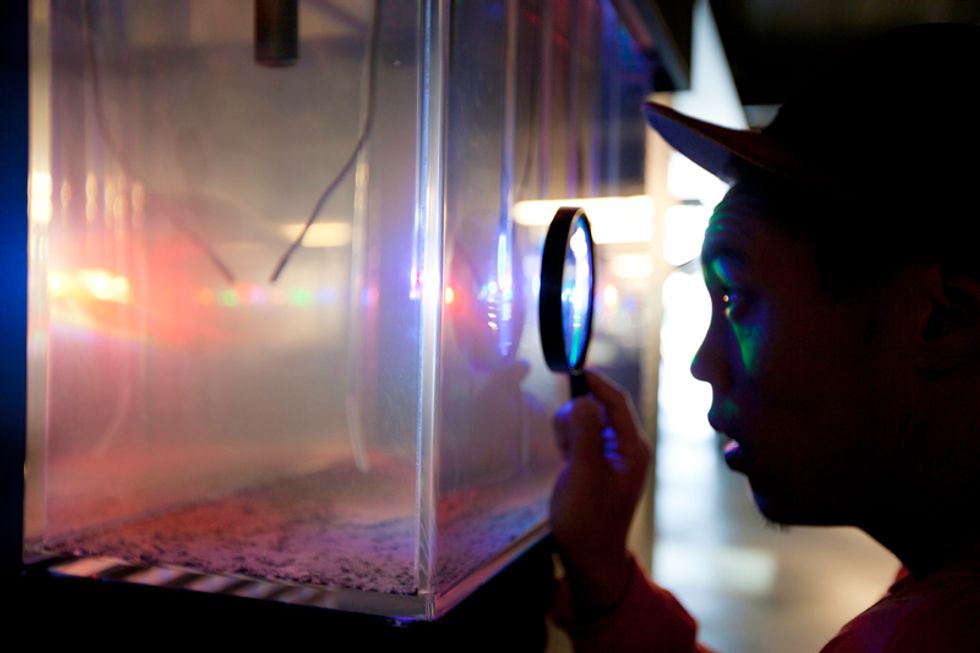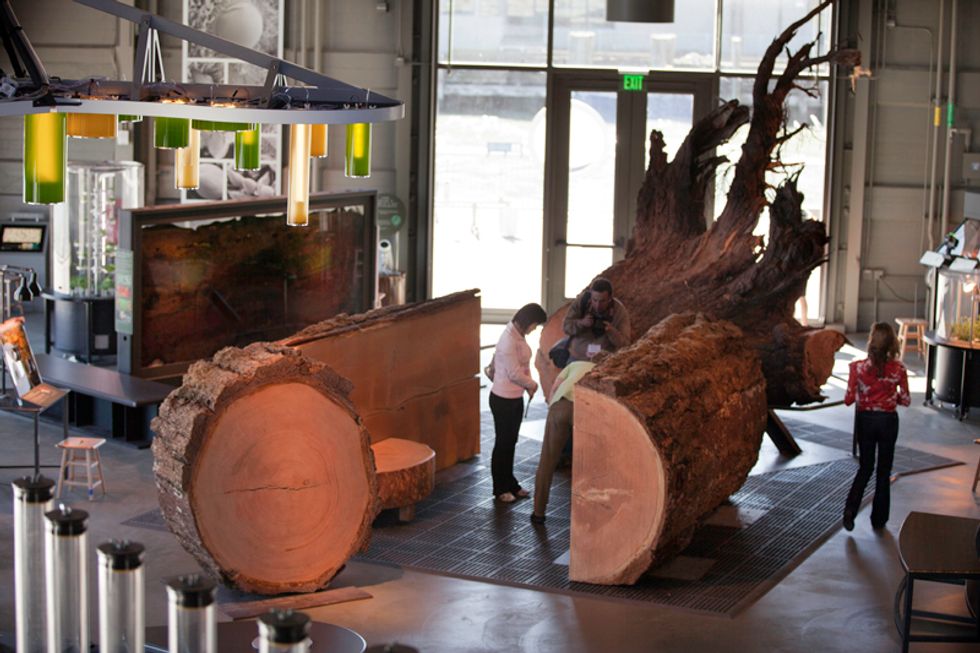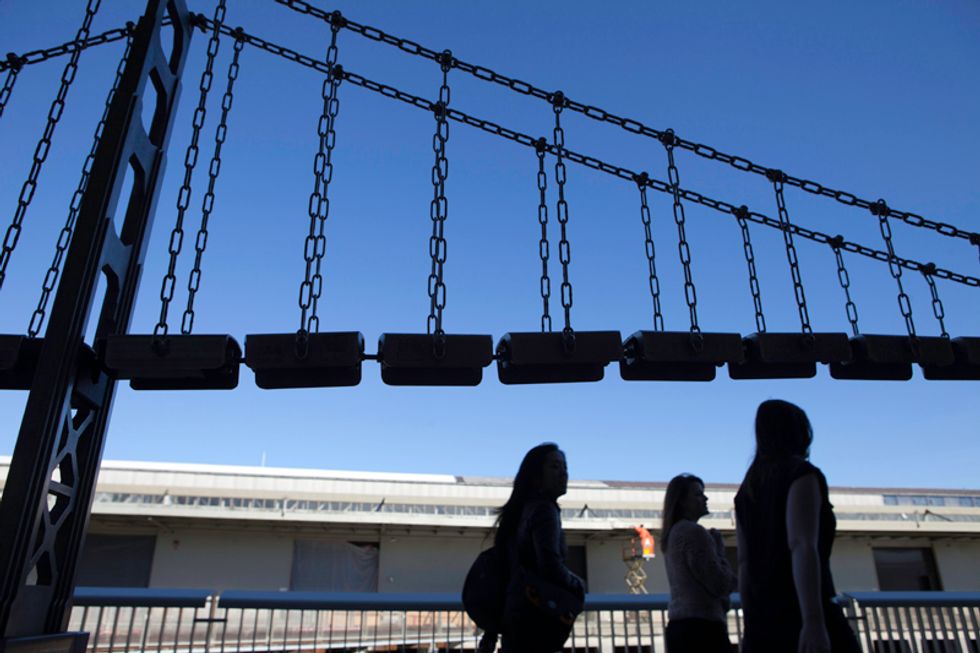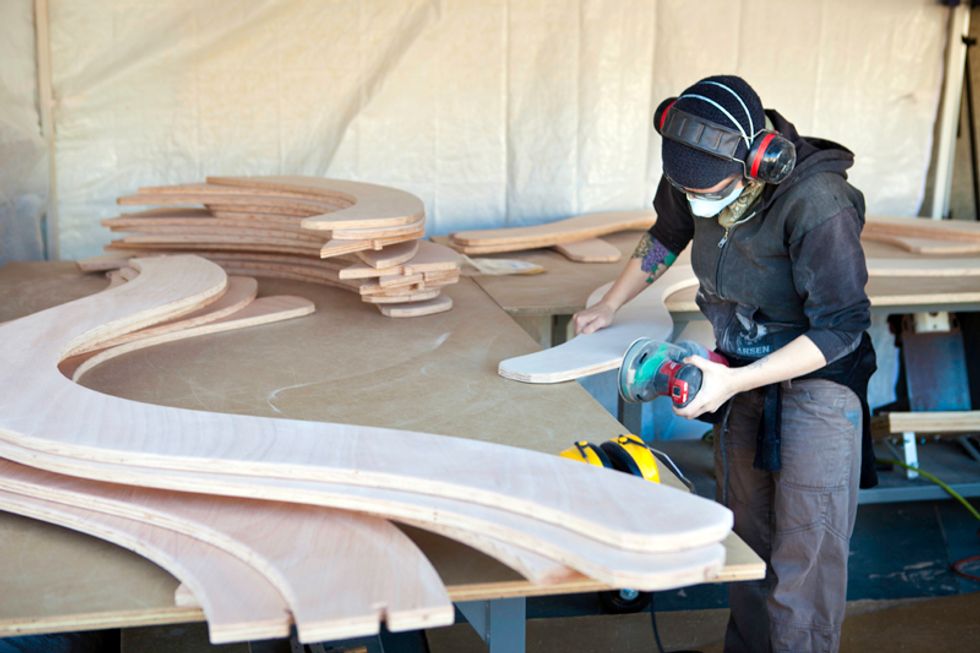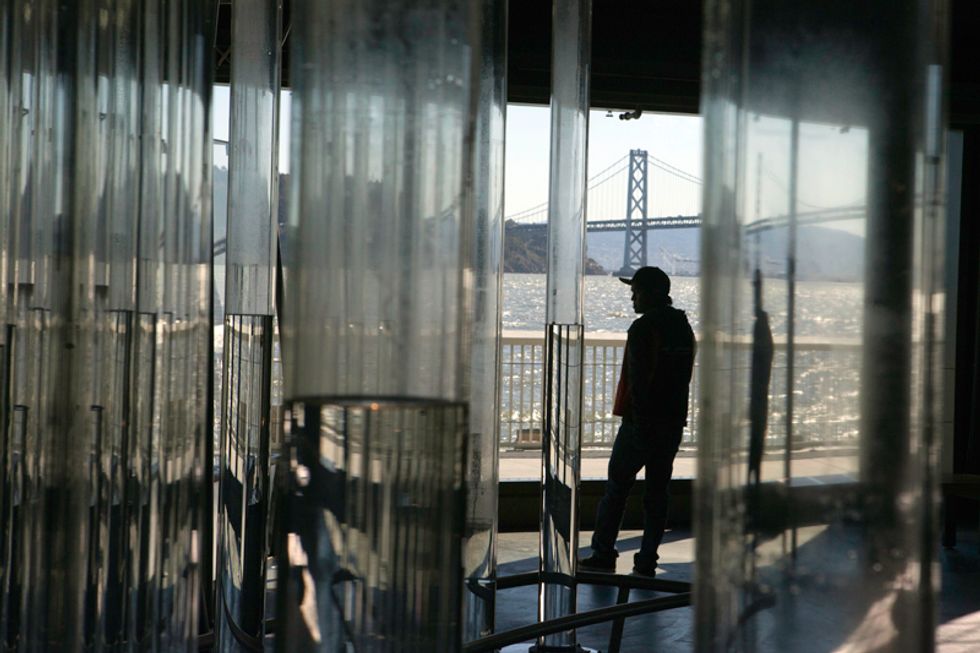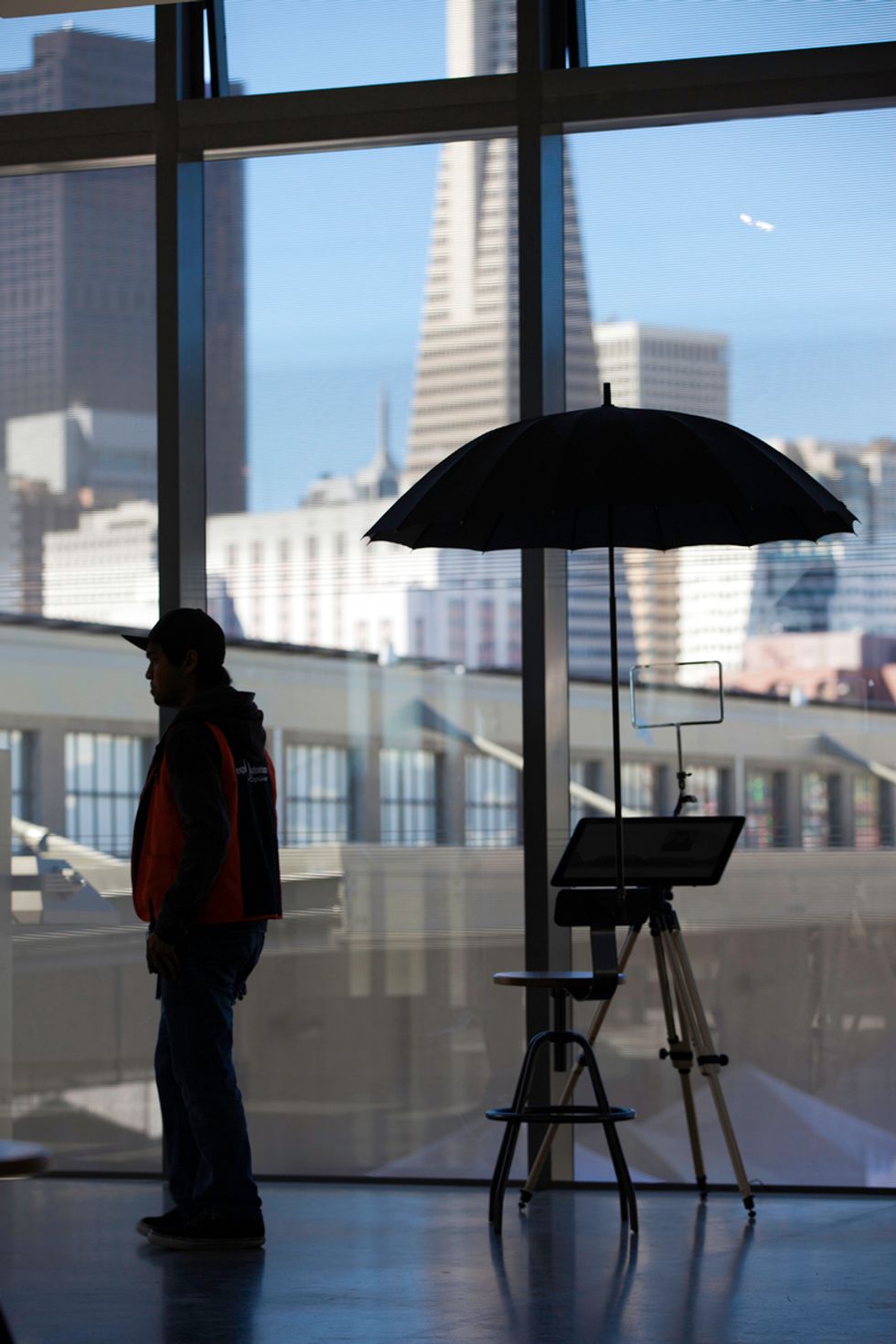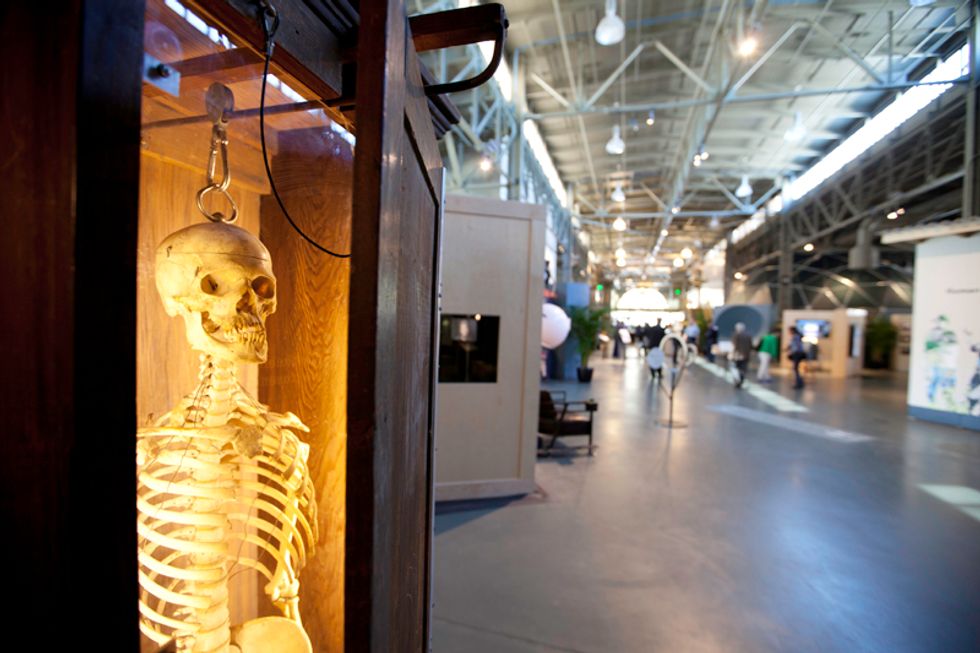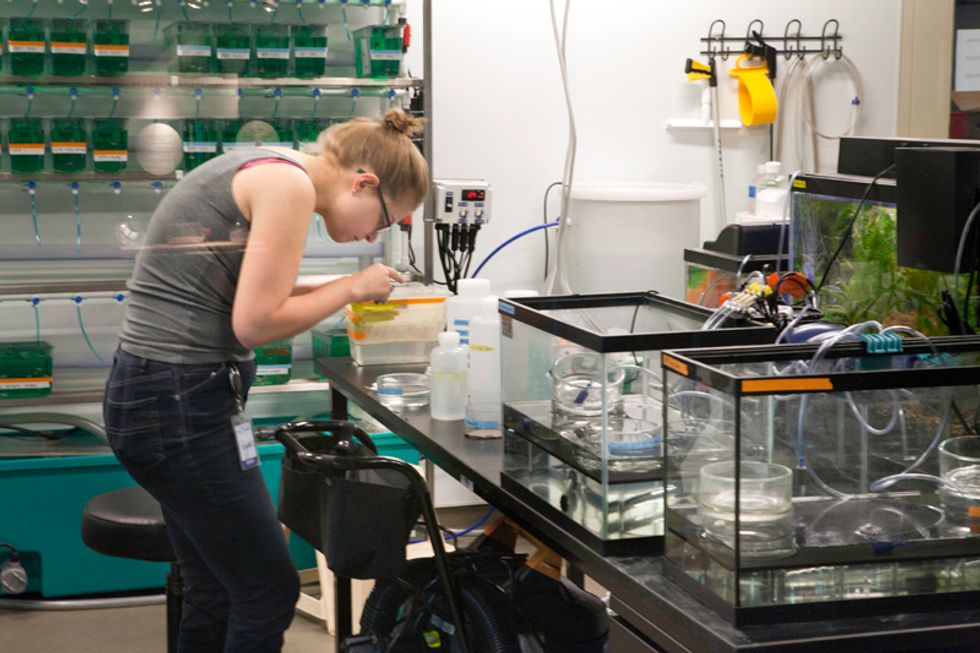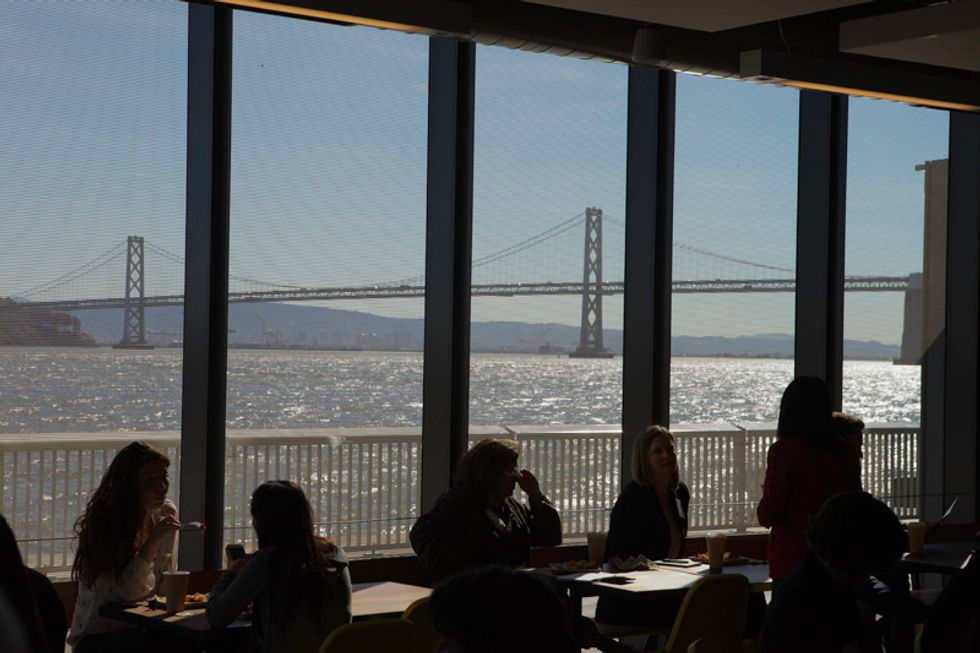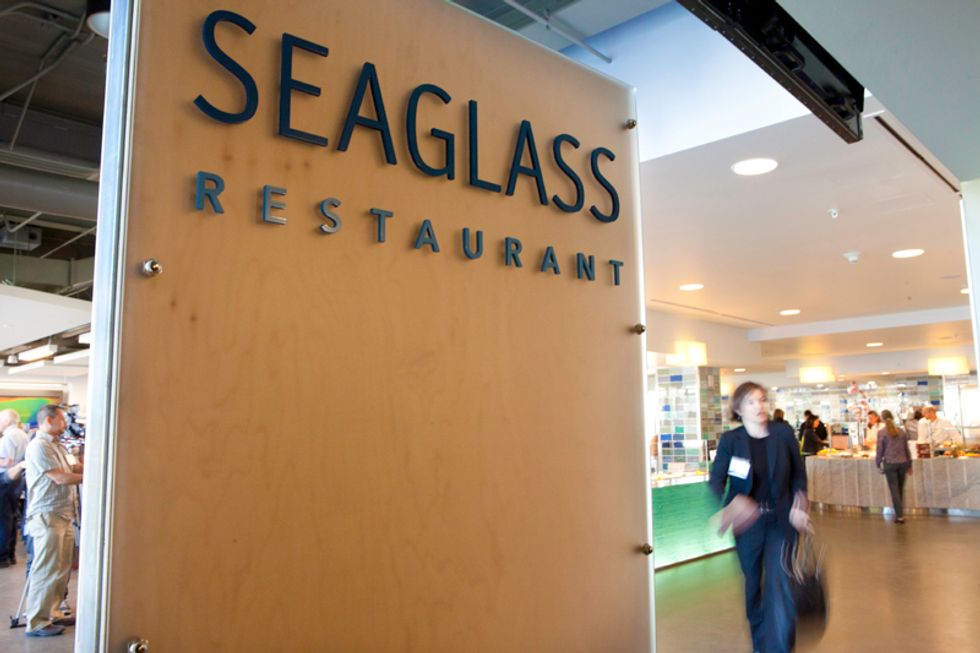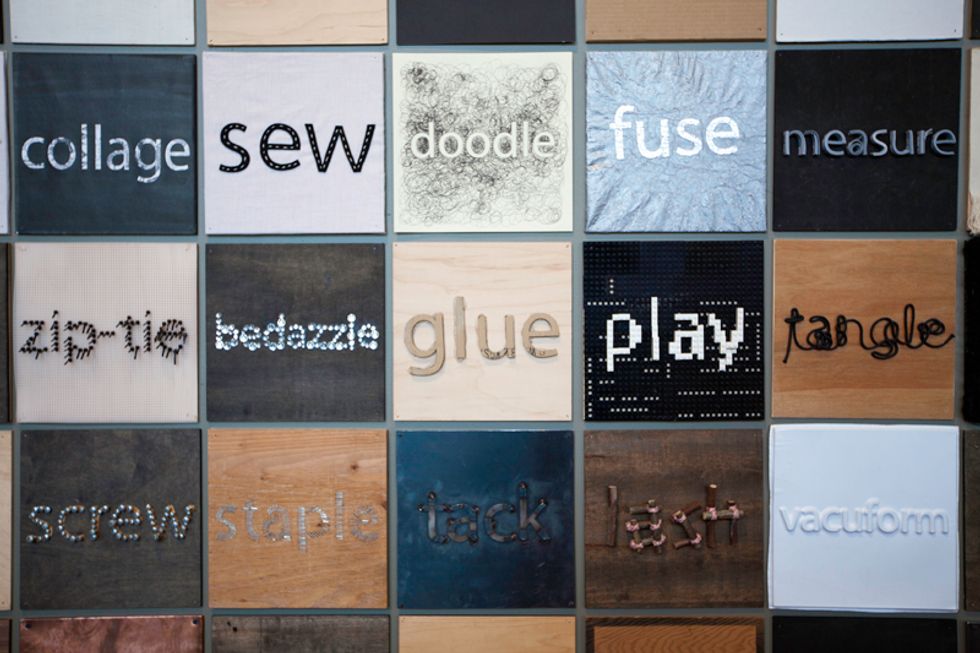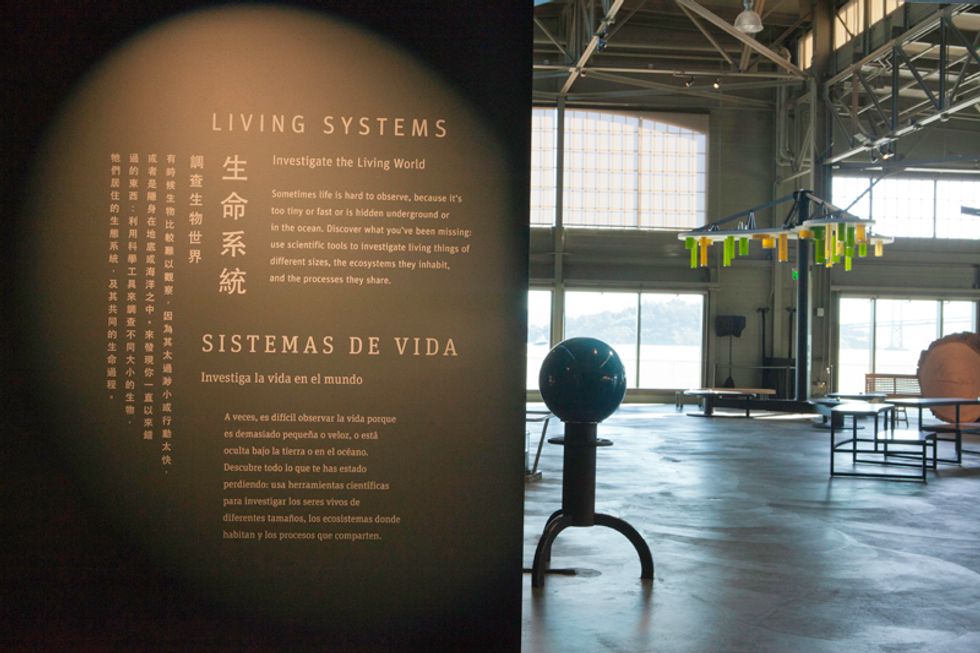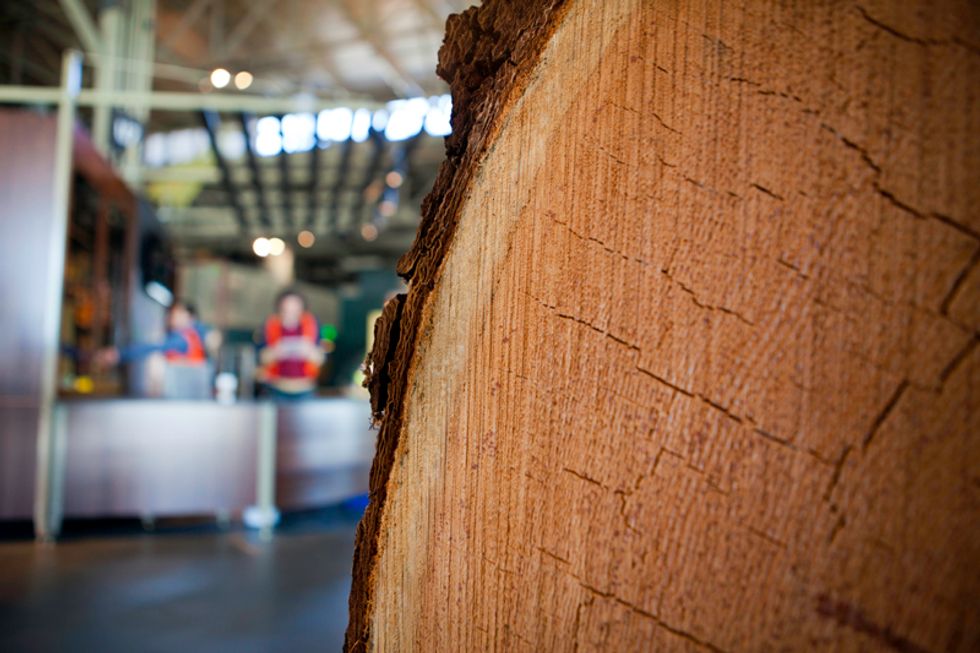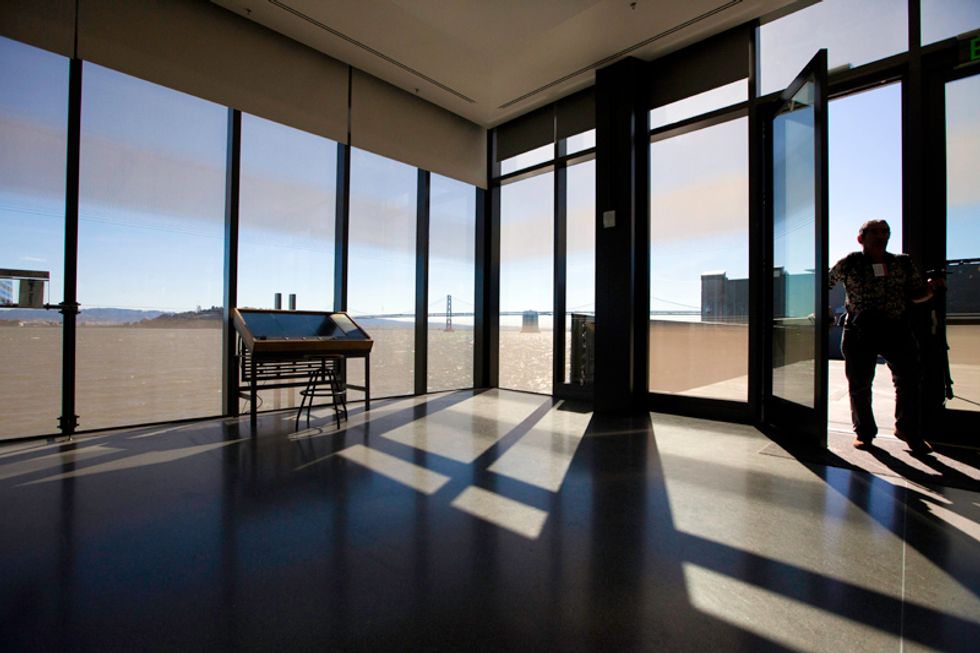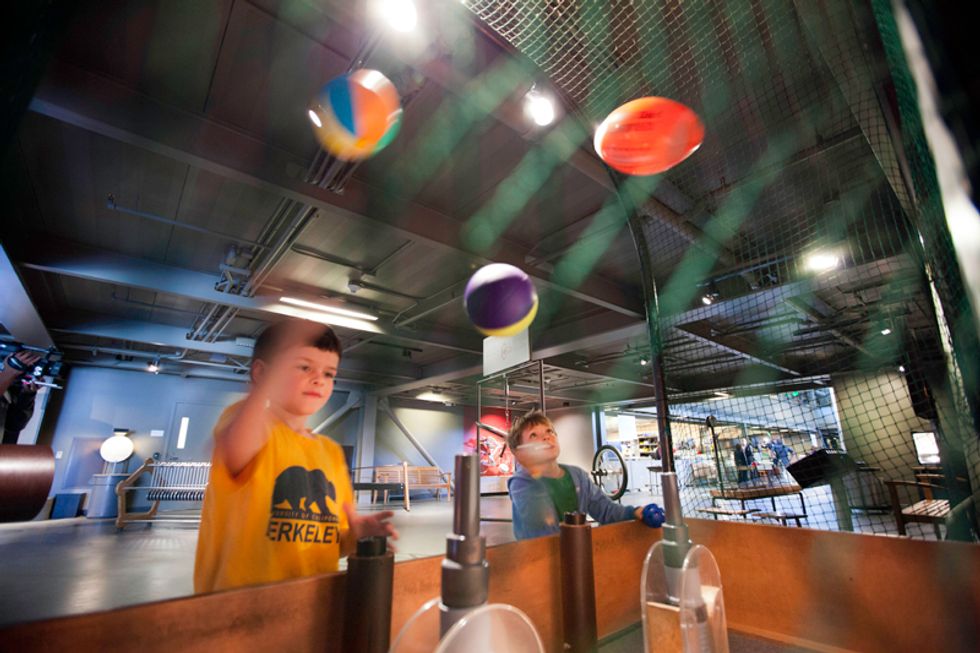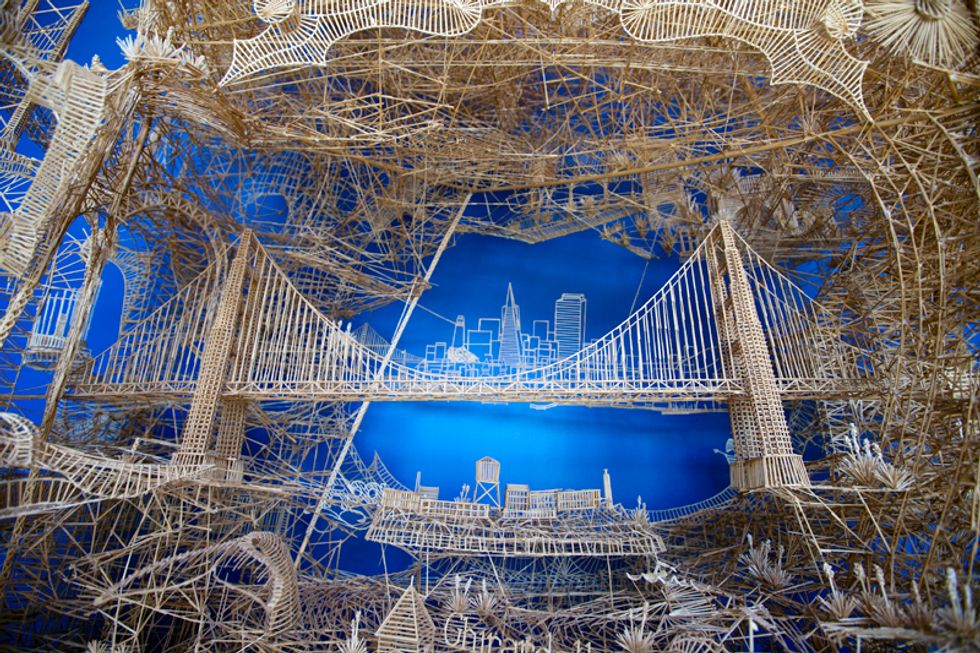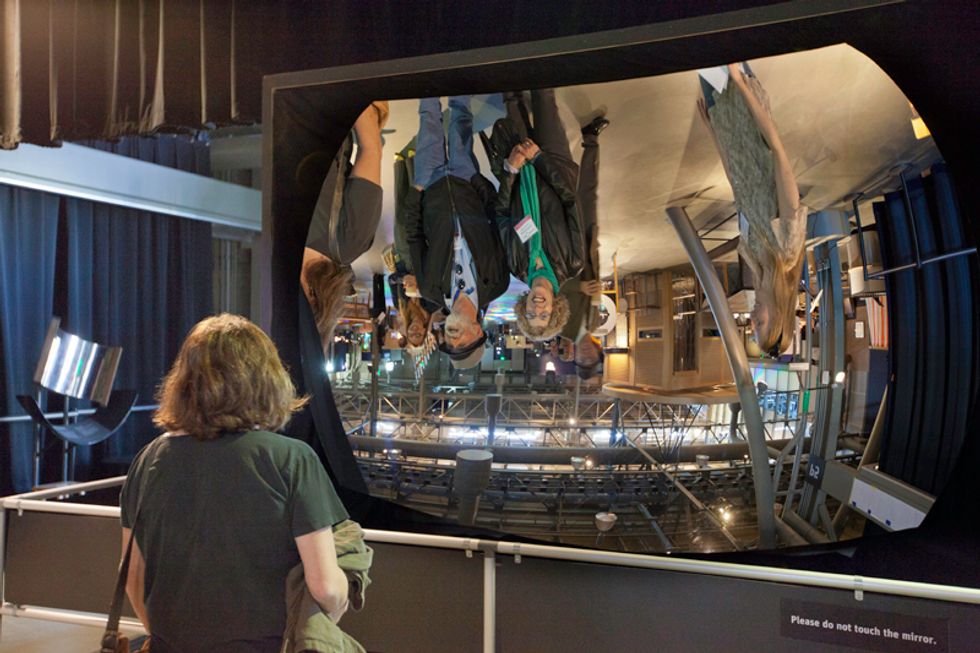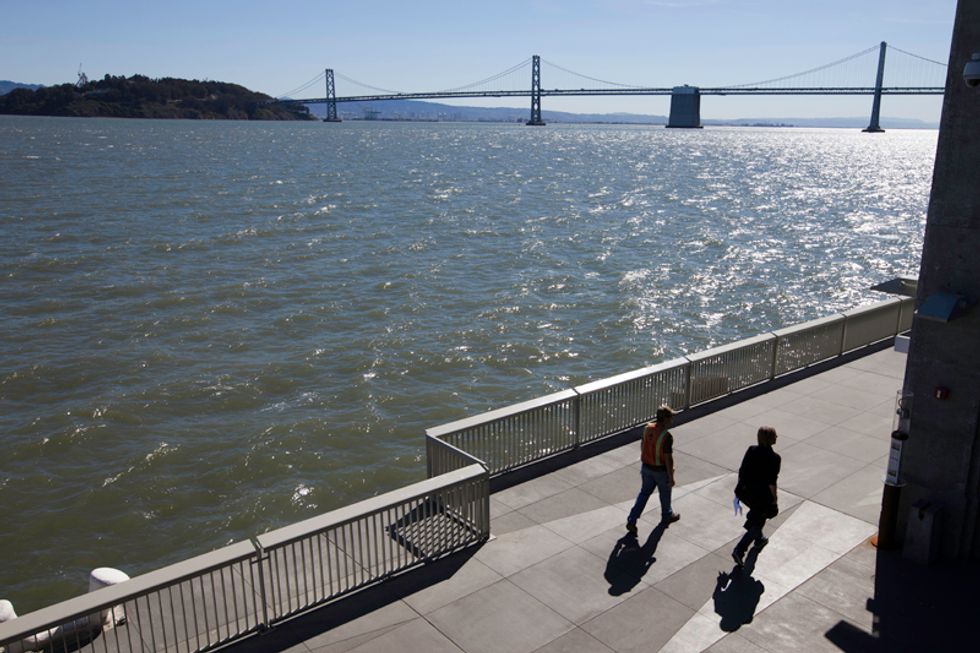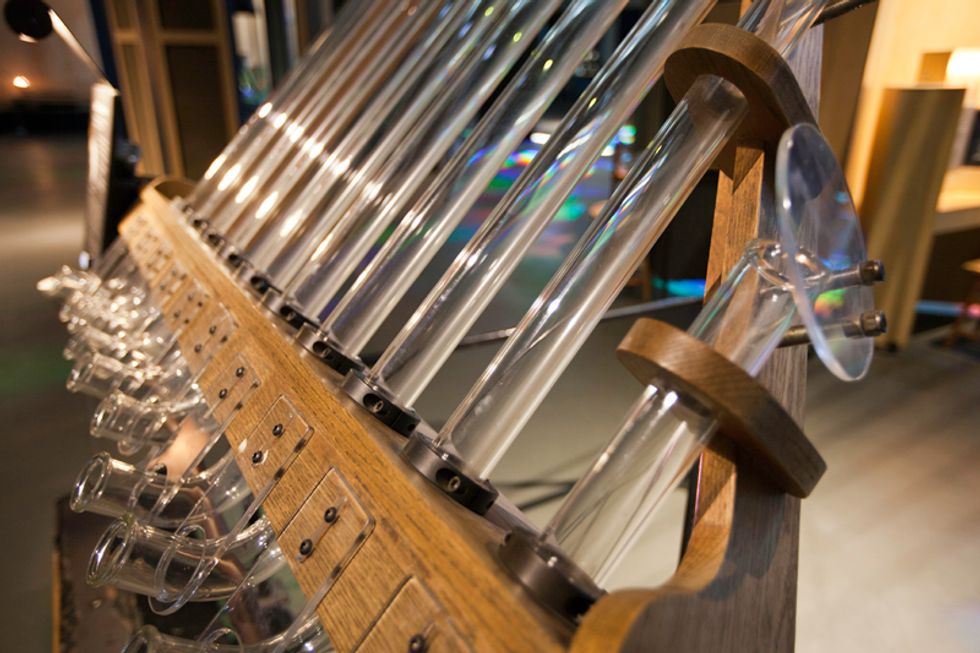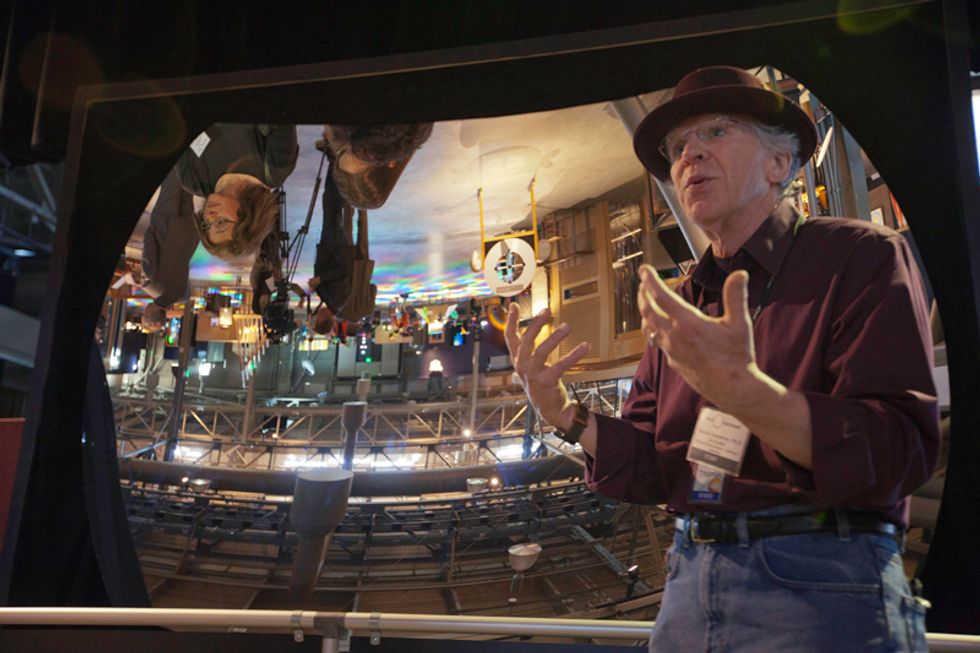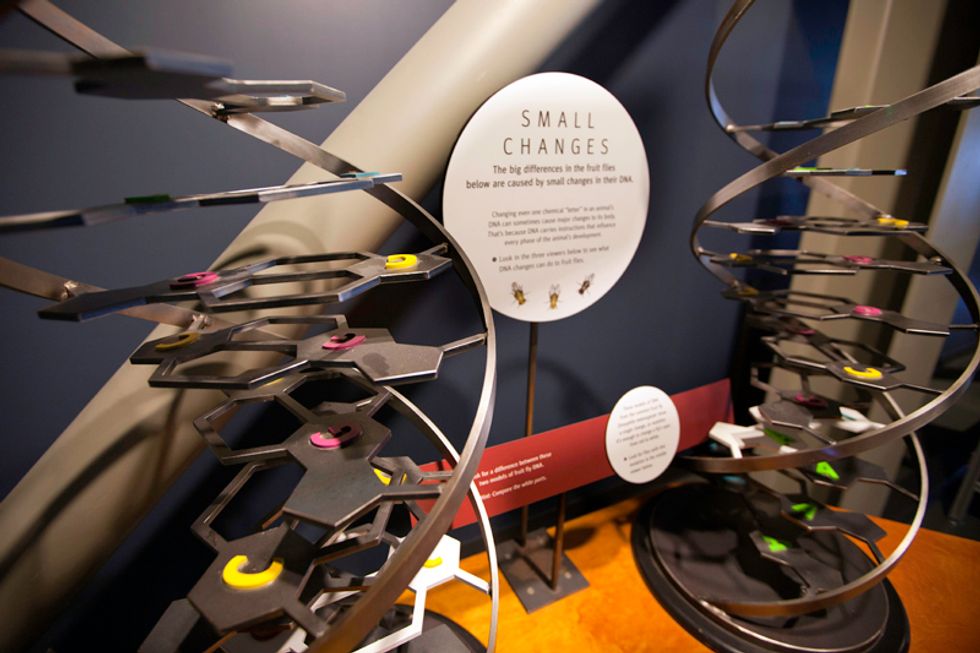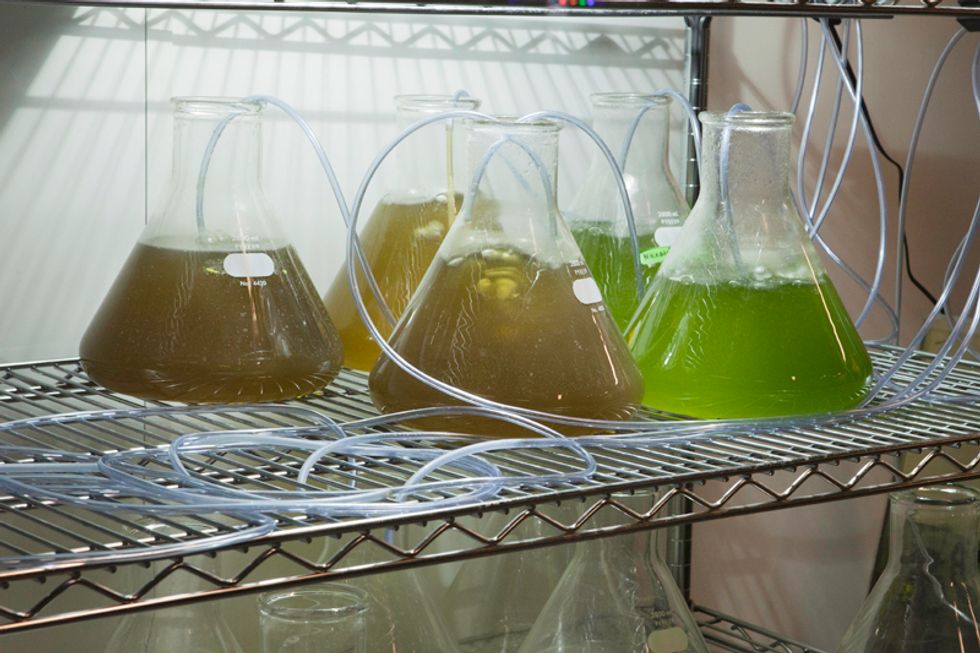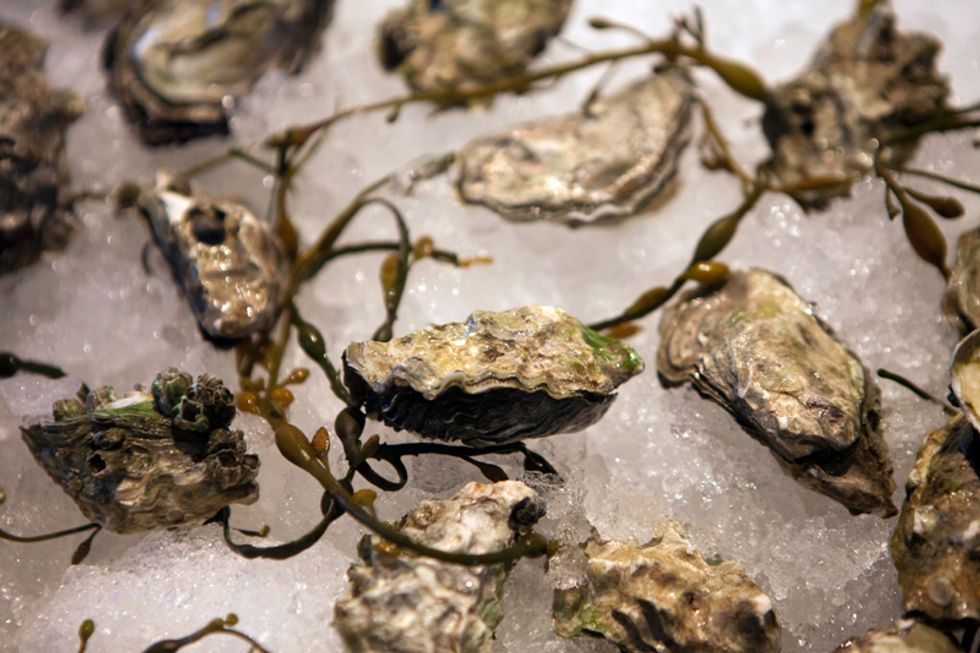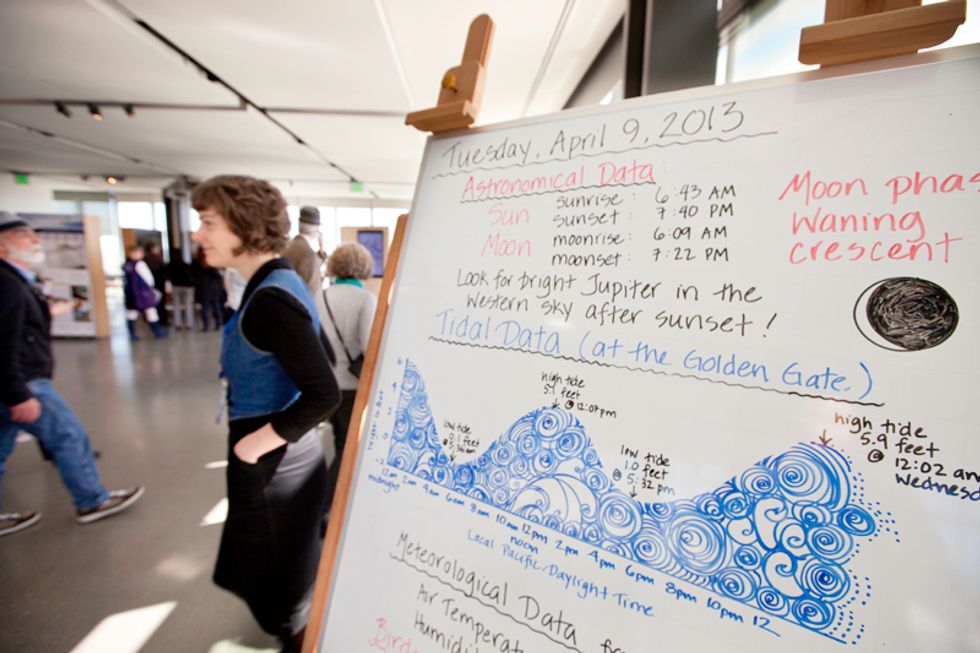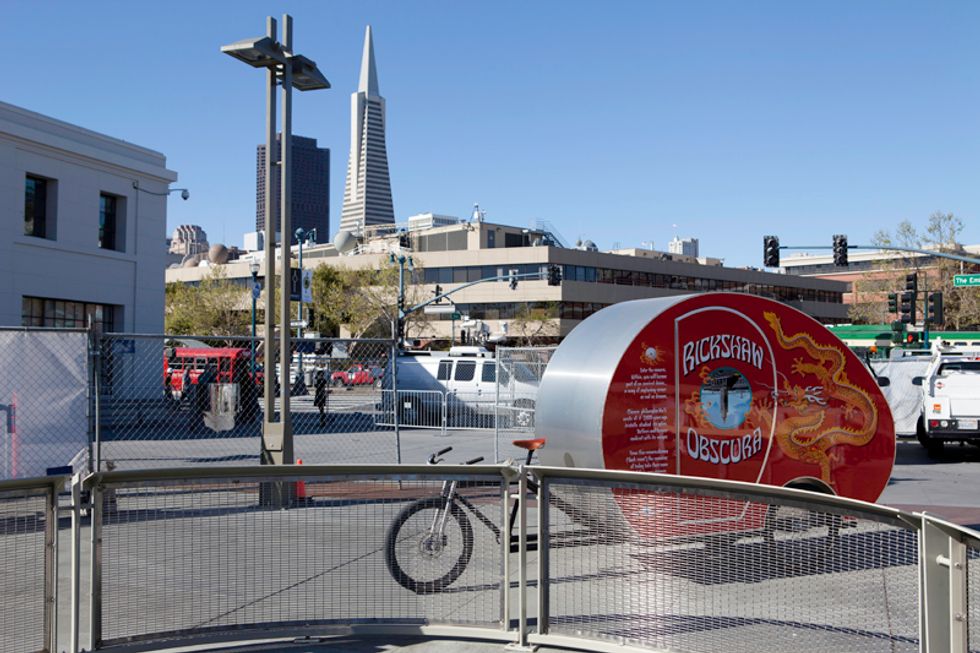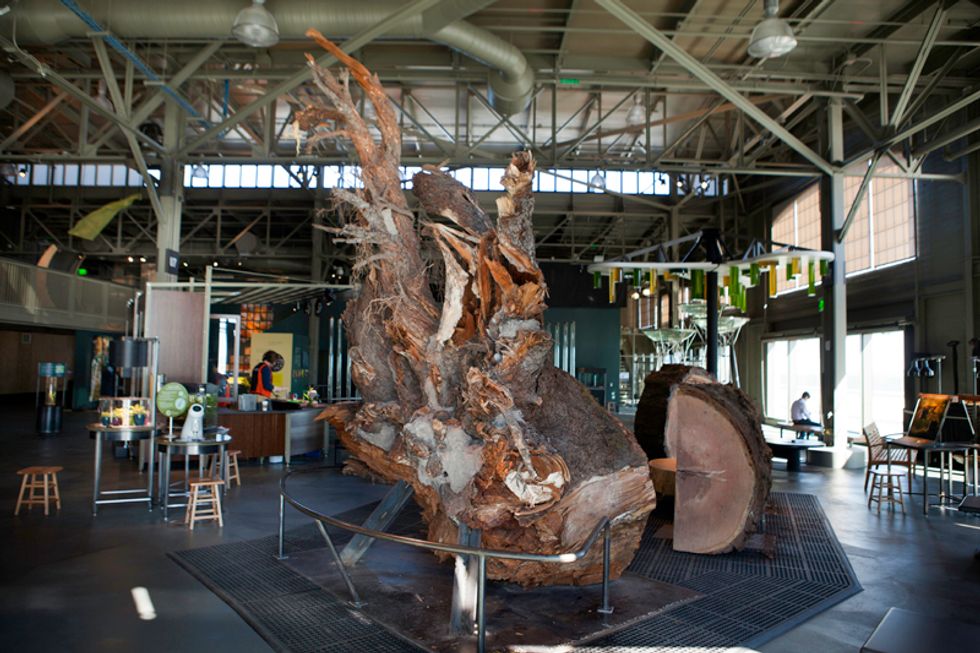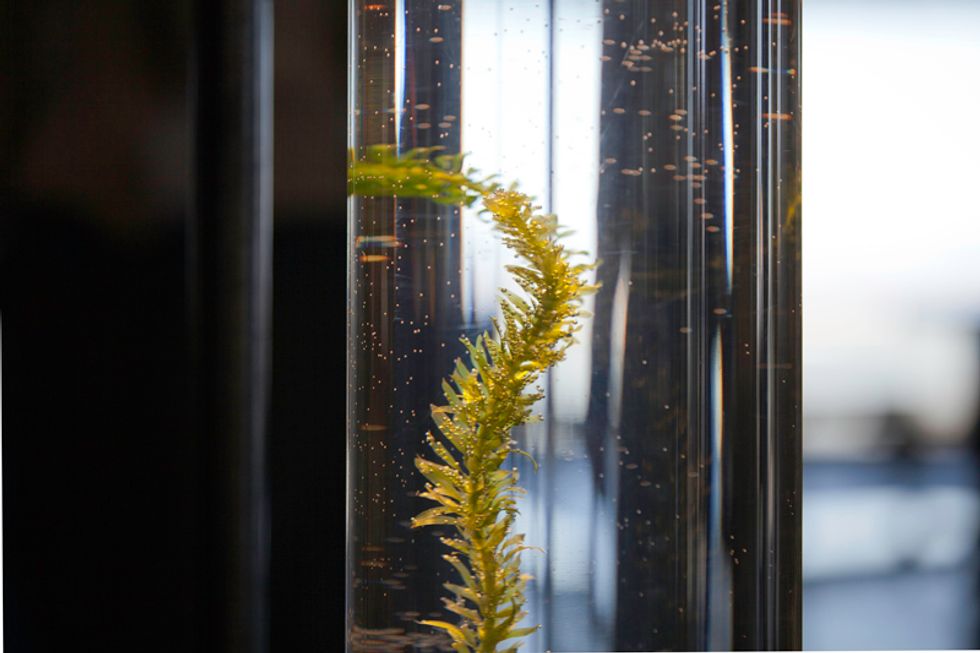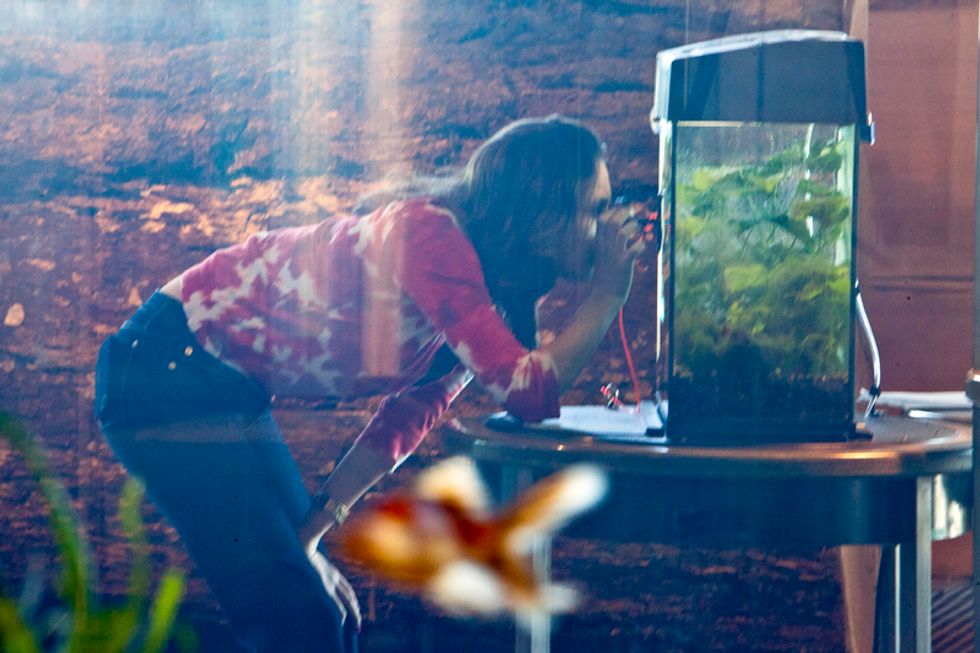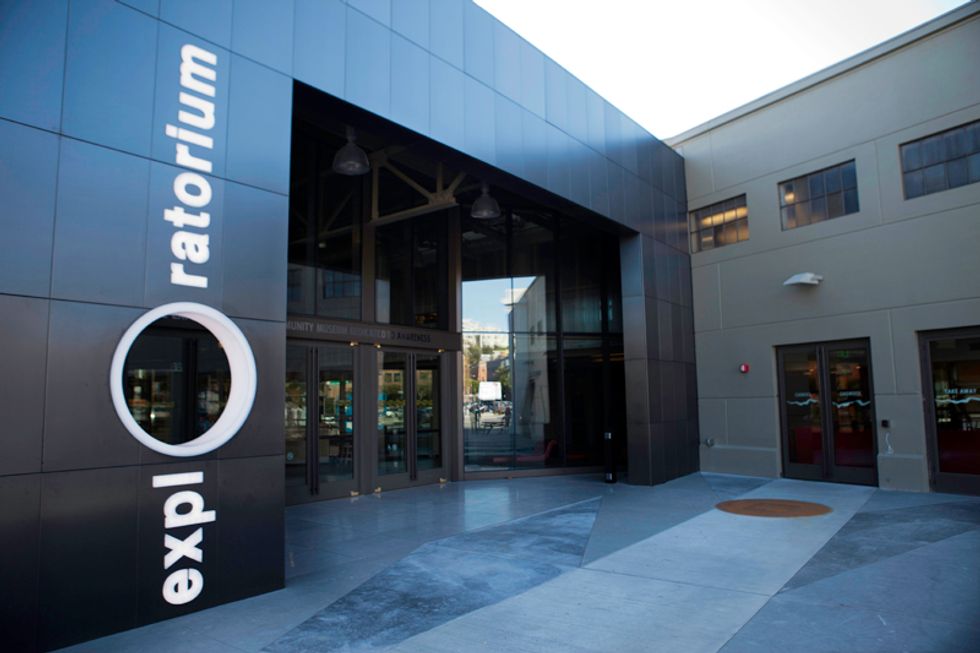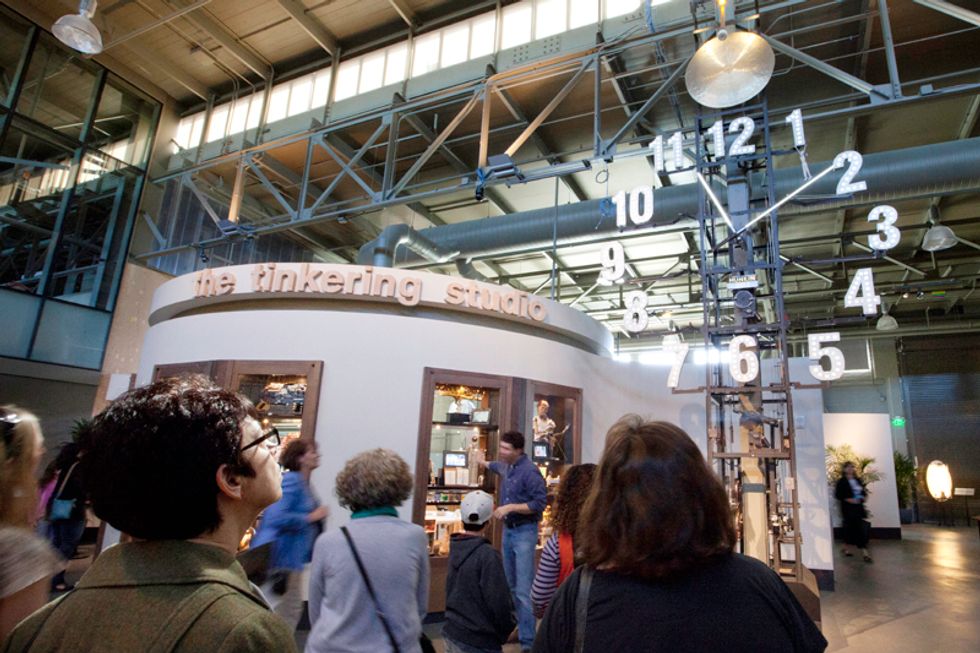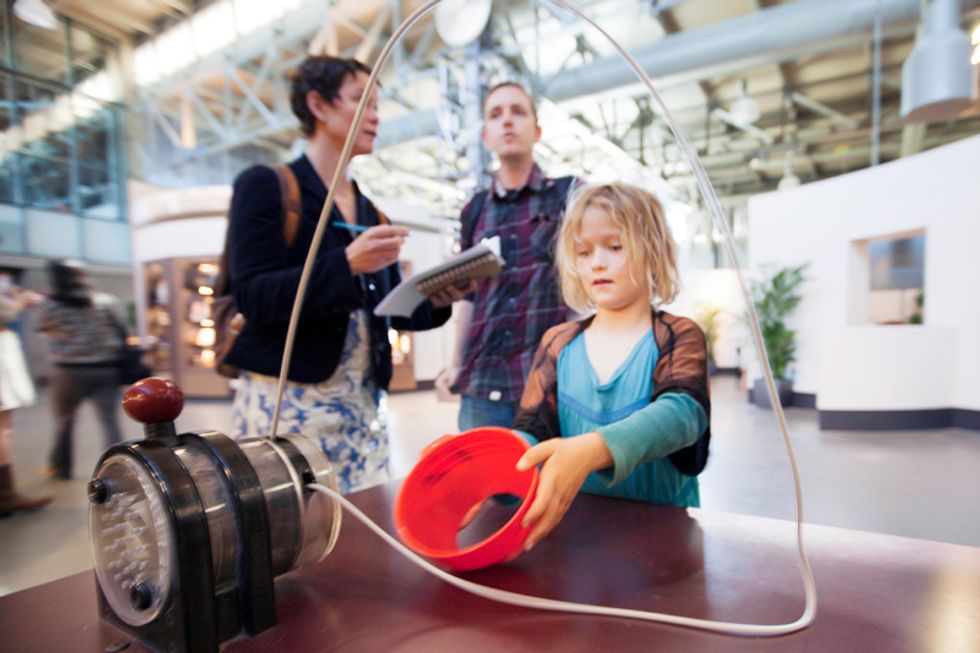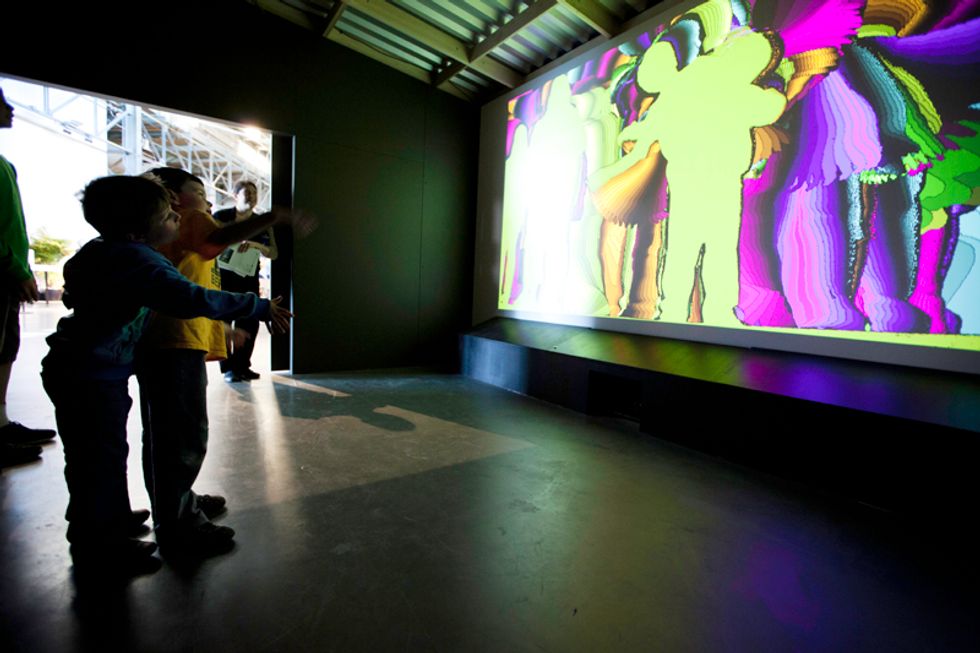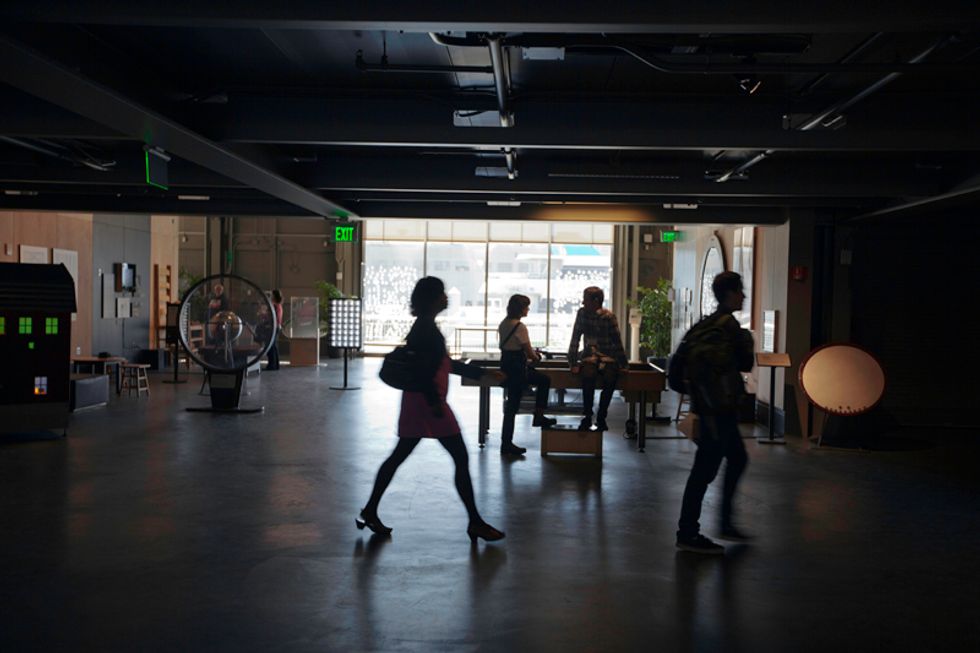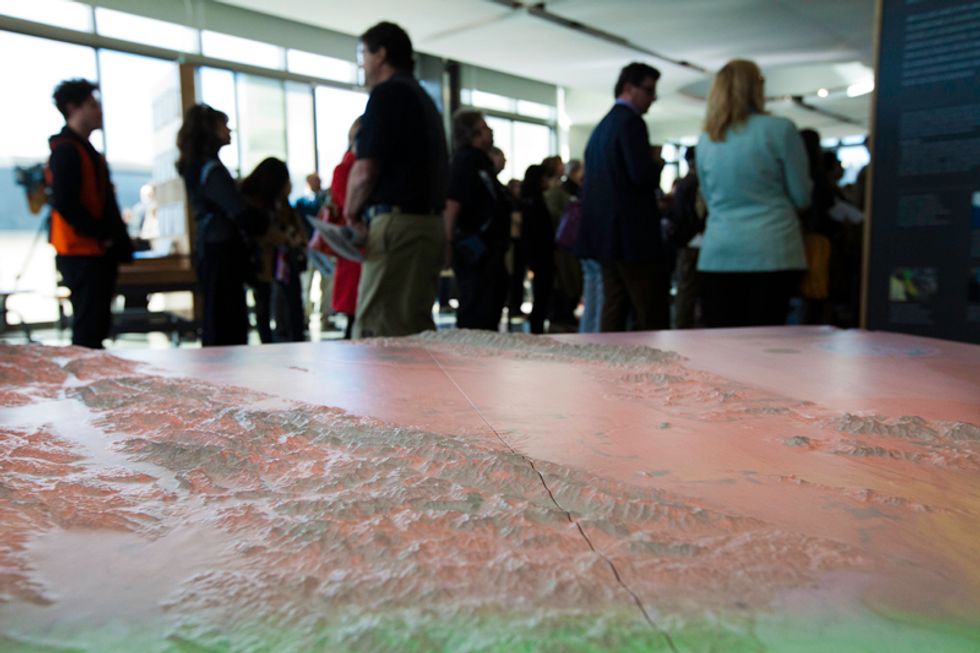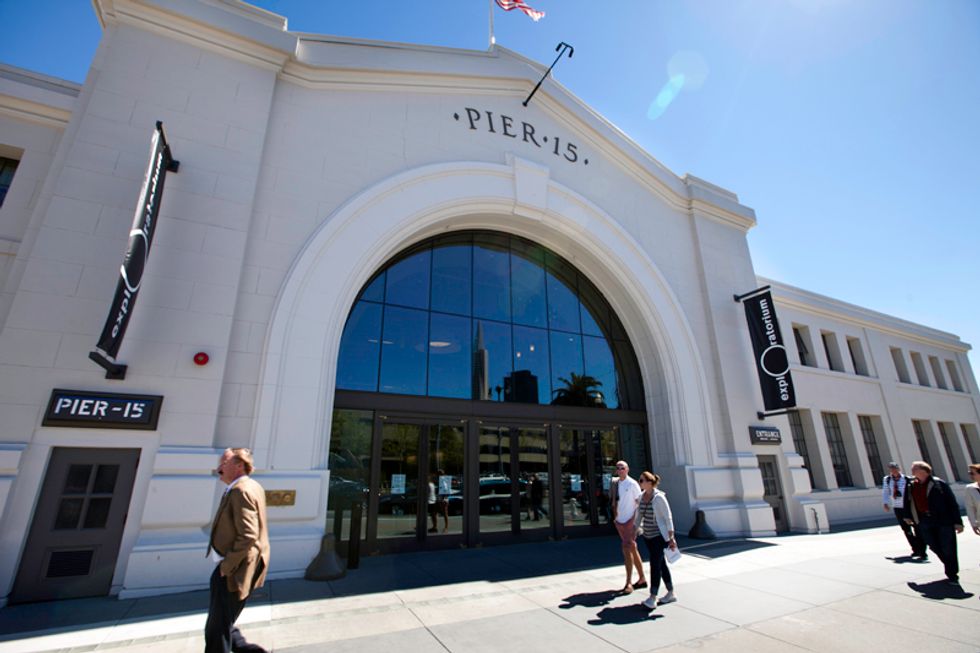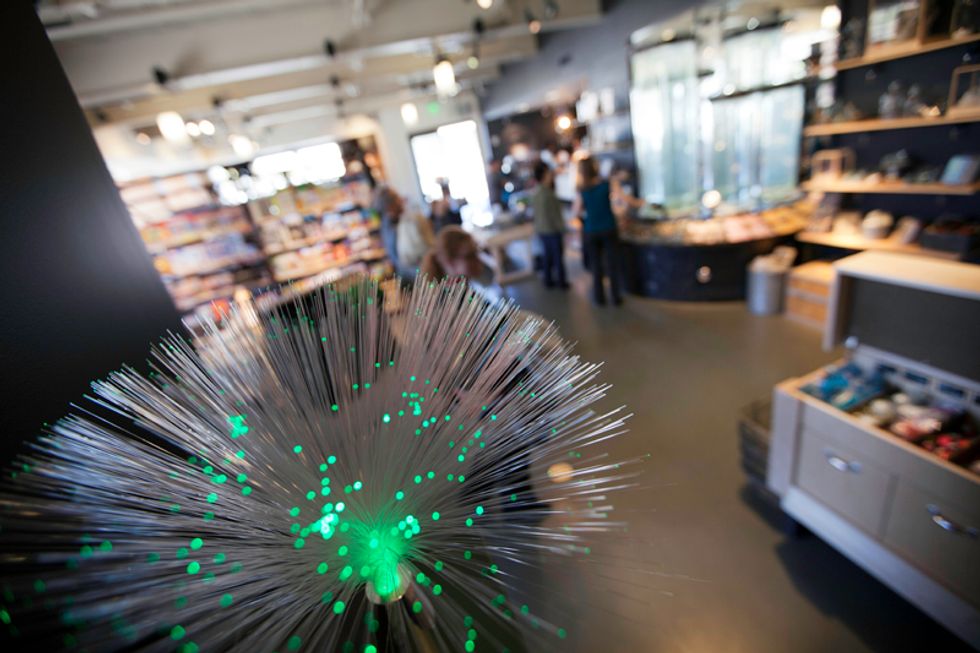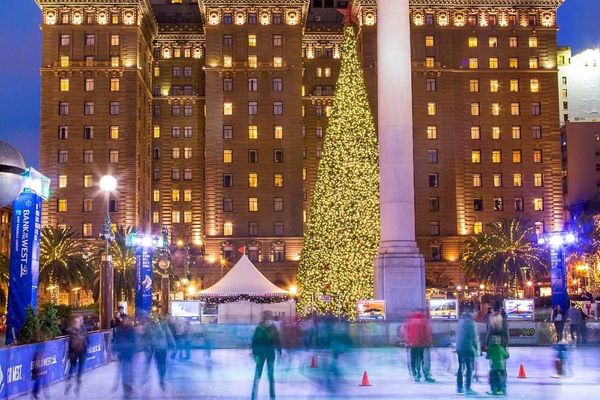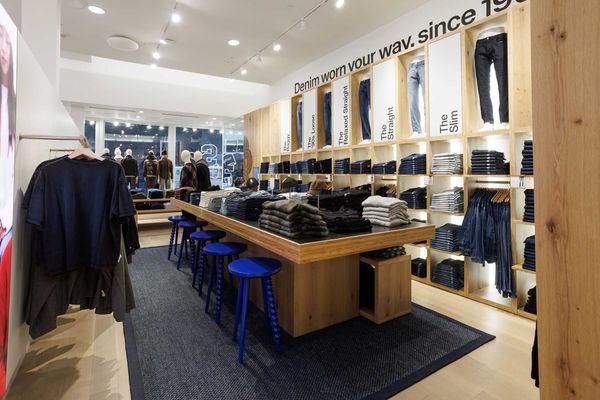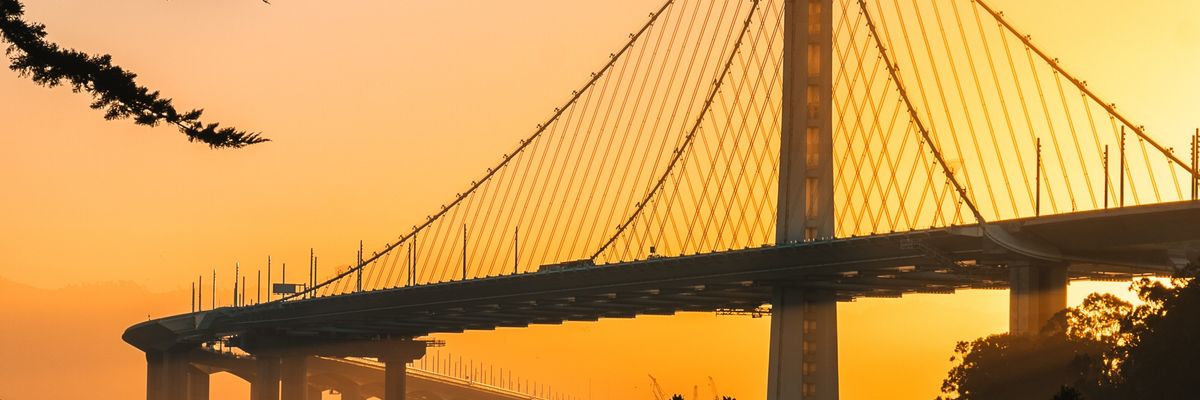"Would you like to sample our fresh honeycomb?" asks the woman behind the counter at the new Exploratorium's Seaglass cafeteria overlooking the bay. "We serve it everyday as part of our Bee Aware program." She scoops a spoonful of Straus yogurt on my plate to cradle the oozy block of sweet, sweet honey, and thus, solidifies my first impression of the new science and learning center on Piers 15 and 17. Nothing short of amazing.
Often described as "a mad scientist's penny arcade, a scientific funhouse, and an experimental laboratory all rolled into one," the Exploratorium emerges anew from its dark, cavernous quarters at the Palace of Fine Arts to a light, airy space on the waterfront designed to interact directly with the environment in which it exists. Designed by Marc L'Italien's team at EHDD, the center boasts three times more overall space than before, with 150 brand new exhibits amongst more than 600 that will be on view in the 330,000-square-foot indoor/outdoor space. The goal of both design and construction is to become the largest net-zero energy museum in the United States, if not the world. And, for the first time in 44 years, the Exploratorium will be able to offer 1.5 acres of free public space in an outdoor gallery of sorts as well as a Center for Art & Inquiry that will host an artist-in-residence program.
"It's a site-specific exploration, one that captures winds and rising tides," says executive director Dennis Bartels. "It's a place at the intersection of both manmade and natural worlds." Long known for making the invisible visible and for nurturing people's curiosity, Bartels explains that the Exploratorium is one of the 12 most impactful nonprofits of the past 30 years, influencing more than 180 million people a year globally and maintaining its role as a thriving center for research, development, and experiential learning. Around the museum, you'll find explainer stations with rotating themes, part of two different explainer programs—one of which is led by high school students who will gain hands-on teaching experience in real time.
There's a whole world to explore, one that will take many visits and hours to even begin to crack the surface of what's on offer. Here's a rough breakdown of what else to expect, but make it a habit to go often and take advantage of this invaluable resource right in our backyard.
Bay Observatory Gallery and Terrace
This stunning, all-glass gallery is literally a window into the exploration of both nature and culture. The bay-facing side features exhibits that help explain natural systems—the movement of the sun, rising and ebbing tides, currents and the paths of cargo ships, and a 3D topographic map of the Bay Area onto which you can project fog patterns throughout the day and track the salinity of merging fresh and saltwater systems. The city-facing side of the gallery focuses on human impact to the landscape.
West Gallery
This area focuses on the art and science of human behavior—play around with thoughts, feelings, perception, memory, and other social aspects of our species. Look out for and updated version of the popular Tactile Dome (a favorite exhibit from the old space) this summer.
Central Gallery
This area is considered the "classic" Exploratorium, with many of the familiar exhibits from the old location. You'll find yourself easily distracted but the parabolic mirror, which provides a trippy, hands-on experience of focusing sound and light. Take notice as you're walking through the corridor—defraction gratings on the windows cast a series of rainbows across the floor in different ways throughout the day as the position of the sun changes.
East Gallery
The East Gallery focuses on biology and living systems. Learn about the power of microscopic plankton, and don't miss your chance at the big tree.
South Gallery
This is the heart and soul of the Exploratorium and houses the workshop area where all the magic happens. It also features the brand new tinkering studio, where visitors can build, make, and experiment right alongside Exploratorium staff.
The Exploratorium opens to the public on Wed. 4/17 at Piers 15 and 17 along the Embarcadero, exploratorium.edu
Photography by Joseph Schell
- Wine Country
- Holiday Gift Guide
- Holiday Recipes
- Events + Openings
- Workouts + Wellness
- Culinary Road Trip
- Community + Activism
- Cooking Videos
- COVID-19
- LGBTQ Pride
- Art + Design
- popular
- Test
- San Francisco
- East Bay
- Oakland
- Marin
- Silicon Valley
- Tahoe
- Secret Recipe
- Foodie Agenda
- Drink Here Now
- The Big Eat
- Play
- Tech
- Weddings
- Top Stories
- From Our Partners
- Property Porn
- Apartment Porn
- Brunch Topics
- Cannabis Insider
- Weekend Guide
- Monthly Agenda
- The Sunday Read
- Neighborhood Guide
- Best of San Francisco
- Most Popular
- Travel
- Dining + Restaurants
- Style Council 2016
- Cannabis
- 7x7 Hot 20
- 7x7 Cannabis Guide
- Bay Area Wellness Guide
- Shop Talk
- Music + Concerts
- Bay Area News
- News + Politics
- Restaurant Review
- Made in the Bay Area
- Style Council 2017
- Humor
- Manually populated
- Right Rail Most Read
- Sports



